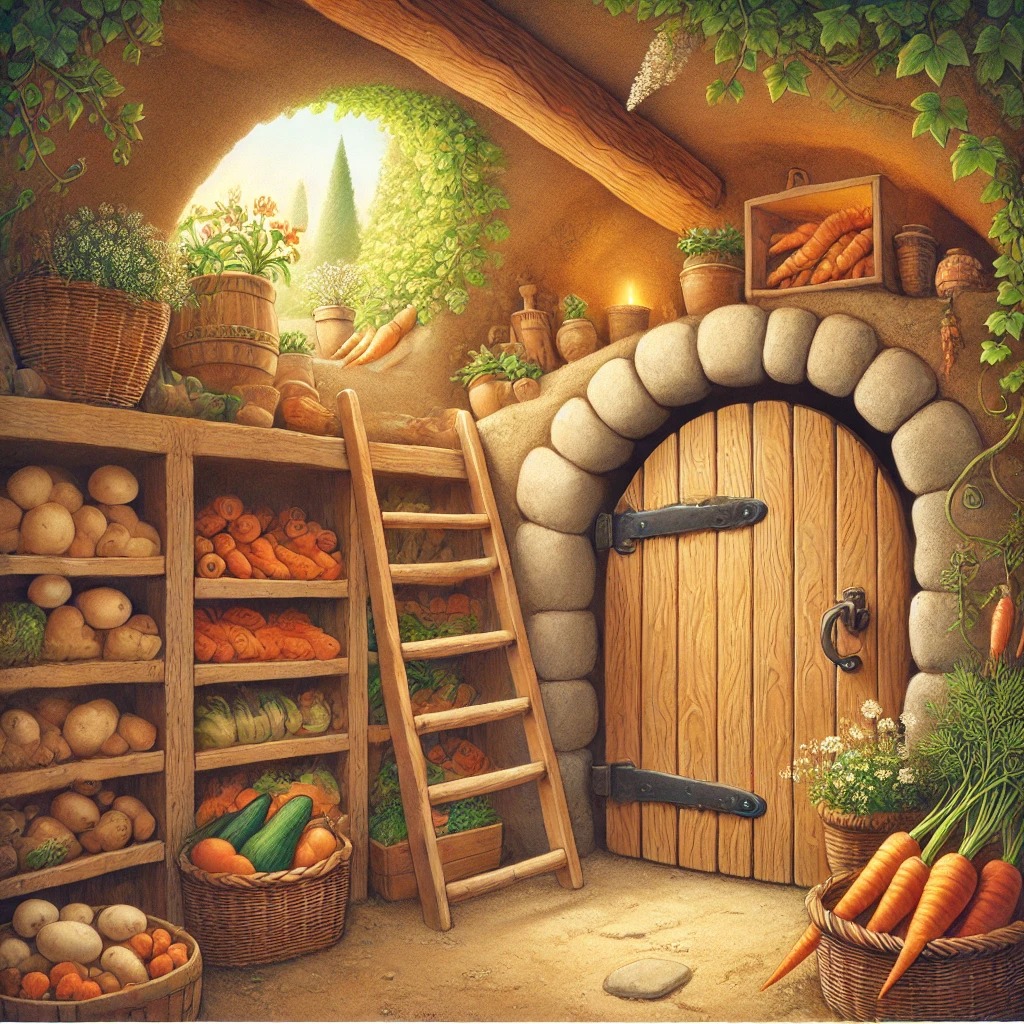How to Build a Root Cellar on a Budget
Small Homestead Journal
Root cellars are a time-tested storage solution that taps into the natural insulation of the earth, providing a space where temperature and humidity conditions are ideal for storing produce throughout the year. If you want to learn how to build a root cellar without breaking the bank, this guide will walk you through everything from selecting the right location to using cost-effective materials.
Planning Your Budget Root Cellar
Before you dig into the ground or start construction, planning is crucial to ensure your root cellar is effective and economical. A well-planned root cellar serves its purpose—keeping your food fresh longer—without any costly surprises during or after construction.
Assessing Your Needs and Space
Evaluate what you intend to store in your cellar and how much space these items might require. This assessment helps in determining the size of the root cellar. Remember, a small, well-insulated space is often more cost-effective and easier to maintain than a large one.
Choosing the Right Location
Selecting a location that takes advantage of natural cooling and moisture can reduce your need for additional insulation and humidity control. An ideal place is a north-facing slope, which provides natural shade and coolness.
Designing on a Dime
Design your root cellar to utilize existing structures, like a part of your basement or an unused shed, which can significantly reduce costs. Consider a simple design that does not require elaborate construction techniques.
How to Build a Root Cellar Using Inexpensive Materials
Building a root cellar does not have to involve expensive construction materials. With a bit of creativity and resourcefulness, you can utilize less costly alternatives that still provide excellent functionality.
Using Earth as Insulation
One of the best insulating materials for a root cellar is the earth itself. Building your cellar partially or wholly underground utilizes the natural insulation provided by the soil, keeping the interior cool in summer and preventing it from freezing in winter.
Recycled Materials for Construction
Recycle old wood, bricks, and even stones for building the structure. Many times, materials like these can be obtained for free or at a low cost from renovation sites or second-hand stores.
DIY Door and Ventilation
A secure, well-fitted door and proper ventilation are crucial for maintaining the right temperature and humidity levels inside the cellar. You can build a simple door from scrap wood and design a basic ventilation system using PVC pipes or old metal ducting.
Effective Techniques for Storing Produce in Your Root Cellar
Once your root cellar is built, understanding how to store various types of produce will help maximize its utility and ensure your fruits and vegetables stay fresh longer.
Understanding the Importance of Humidity and Temperature Control
Different crops have different storage needs. Most root vegetables require high humidity and cool temperatures, whereas onions and garlic need lower humidity and slightly warmer conditions. Using separate sections or containers can help manage these varying requirements effectively.
Best Practices for Arranging Your Crops
Store vegetables in wooden bins or on shelves made from slats to allow for air circulation around them. Potatoes, carrots, and beets do well in slightly damp sand or sawdust to keep them from drying out and to maintain humidity.
Regular Checks and Maintenance
Regularly check on the stored produce for any signs of spoilage or damage. Remove any spoiled items promptly to prevent the spread of mold or diseases. Additionally, check the structure for any signs of moisture damage or pests, and make necessary repairs or adjustments to the ventilation.
Conclusion:
Building a root cellar on a budget is definitely achievable with careful planning, a bit of DIY spirit, and the right information. By understanding how to leverage the natural properties of the earth and using recycled or inexpensive materials, you can create a functional space that extends the shelf life of your produce without requiring expensive technology or high ongoing costs. This project not only adds value to your home but also enhances your self-sufficiency, making it a worthwhile investment for anyone looking to store food naturally.
Frequently Asked Questions (FAQs)
How deep underground should a root cellar be?
A root cellar should be deep enough to be below the frost line, typically at least 3 feet underground, to maintain stable temperatures.
What is the cheapest way to build a root cellar?
Using existing structures like a basement or an old shed and incorporating inexpensive materials like wood and earth can be the cheapest way to build a root cellar.
Does a root cellar need ventilation?
Yes, proper ventilation is crucial in a root cellar to regulate air flow and maintain appropriate humidity and temperature levels.